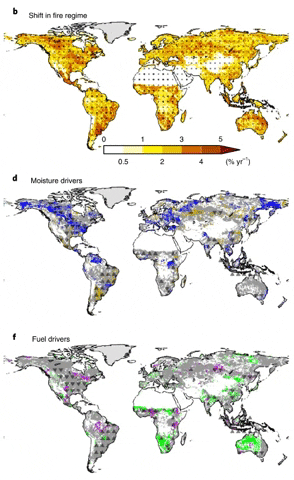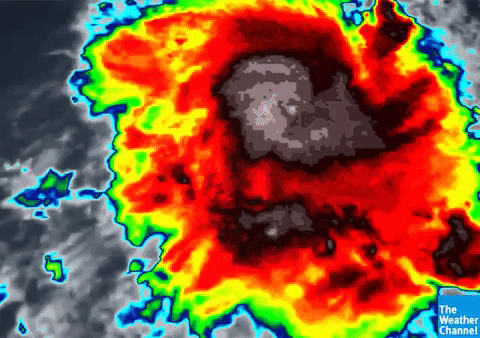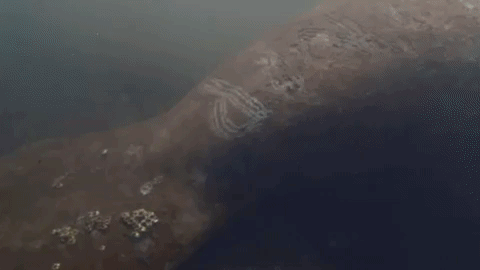Lake Mead, a lifeline for water in Los Angeles and the West, tips toward crisis – “This place is unrecognizable”
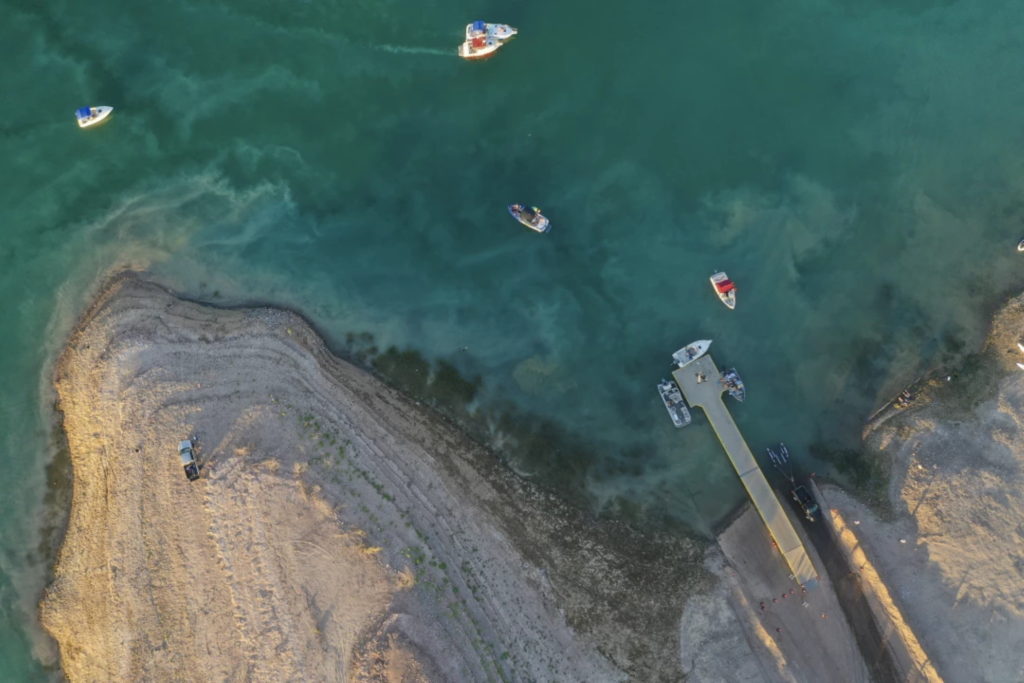
By Jaaweed Kaleem and Thomas Curwen
11 July 2021
LAKE MEAD, Nevada (Los Angeles Times) – Eric Richins looked out from his pontoon boat to the shallows on the lake’s western edge. He squinted and paused as if he had come upon a foreign shore. For the first time in a career navigating the waters of the American West, he didn’t know where he was.
“I could have sworn I was here just six weeks ago catching smallmouth and bigmouth bass,” said the 35-year-old fisherman who runs tours on this 247-square-mile basin where the Colorado River meets the Hoover Dam to form the nation’s largest reservoir.
He pointed ahead to what looked like dozens of tiny steps made from successive layers of dried mud now covered in tall grass and weeds — the effect of rapidly creeping vegetation over a shoreline that has been dropping by nearly a foot a week.
“Now it looks like a lawn. I knew the drought was bad. I didn’t realize it was this bad,” he said. “This place is unrecognizable.”
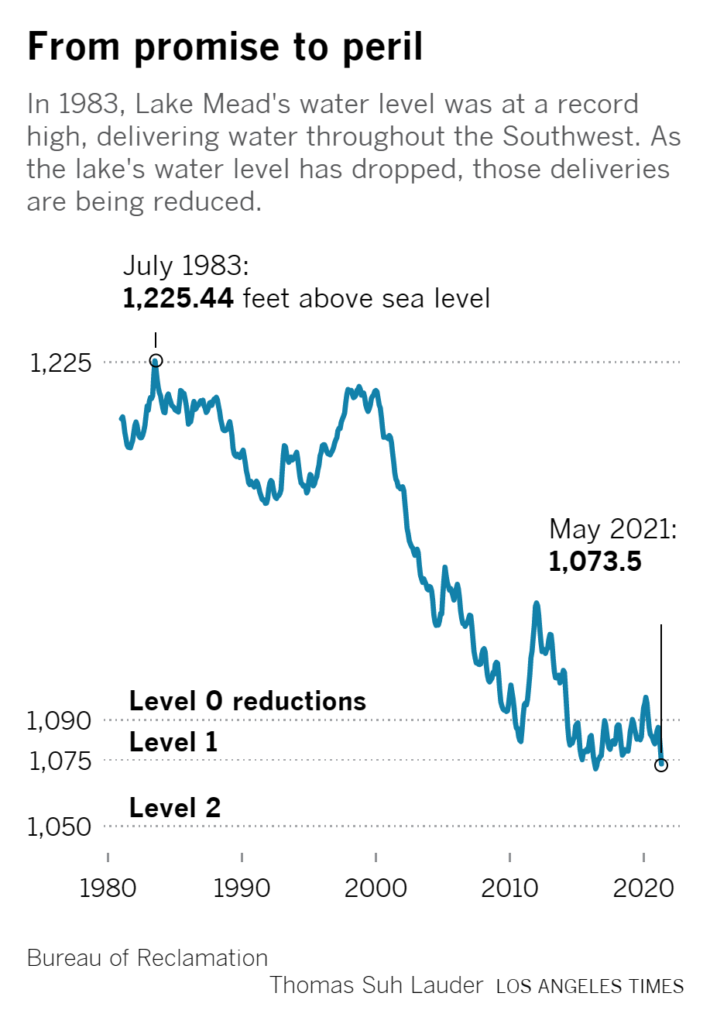
Lake Mead, a lifeline for 25 million people and millions of acres of farmland in California, Arizona, Nevada, and Mexico, made history when it was engineered 85 years ago, capturing trillions of gallons of river water and ushering in the growth of the modern West.
But after years of an unrelenting drought that has quickly accelerated amid record temperatures and lower snowpack melt, the lake is set to mark another, more dire turning point. Next month, the federal government expects to declare its first-ever shortage on the lake, triggering cuts to water delivered to Arizona, Nevada, and Mexico on Jan. 1. If the lake, currently at 1,068 feet, drops 28 more feet by next year, the spigot of water to California will start to tighten in 2023. […]
The monsoon rains that typically hit the Southwest during the summer never materialized last year. In Colorado, drier soil from higher-than-typical temperatures and lower air moisture has led to less melted snow draining into rivers and streams. As a result of the drought in Northern California, Los Angeles’ Metropolitan Water District is building up its reserves with water taken from the Colorado River, which will continue to flow uninterrupted through 2022.

But what comes next?
The Bureau of Reclamation estimates that normal snowfall in the Rockies and the Upper Basin this winter will reverse the present drought. By the end of September 2022, the agency expects the river to bring 8.3 million acre-feet of water into Lake Powell, the reservoir on the Utah-Arizona border that precedes Lake Mead.
The projection, based on soil moisture, temperatures, and precipitation, is updated monthly, but currently goes against the trends of the last two years. From October 2019 to September 2020, Lake Powell received 5.8 million acre-feet, and since has received 3.2 million acre-feet. [more]
‘Unrecognizable.’ Lake Mead, a lifeline for water in Los Angeles and the West, tips toward crisis
